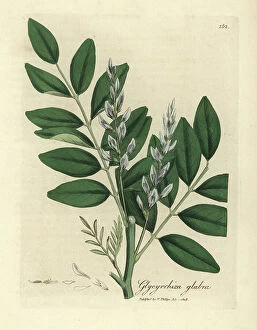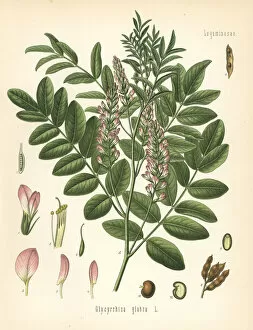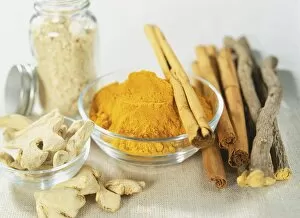Glycyrrhiza Collection
"Glycyrrhiza: The Sweet and Medicinal Wonder" Glycyrrhiza, scientifically known as Glycyrrhiza glabra
All Professionally Made to Order for Quick Shipping
"Glycyrrhiza: The Sweet and Medicinal Wonder" Glycyrrhiza, scientifically known as Glycyrrhiza glabra, is a fascinating plant that has been valued for centuries due to its numerous benefits. This perennial herbaceous plant belongs to the legume family and is native to various regions across Europe and Asia. One of the most notable uses glabra is in traditional medicine. Its roots have long been utilized for their medicinal properties, particularly in treating respiratory ailments such as coughs and sore throats. In fact, licorice, derived from this plant's root, has been used as a natural remedy since 1832. The beauty glabra lies not only in its healing abilities but also in its aesthetic appeal. With vibrant blue flowers resembling those of the peony (Paeonia officinalis), it adds a touch of elegance to any garden or landscape. Liquorice or licorice enthusiasts will be delighted to know that Glycyrrhiza glabra is the primary source of this beloved confectionery flavoring. Whether enjoyed on its own or combined with other ingredients like carob tree pods or cinnamon sticks, liquorice holds a special place in culinary creations worldwide. Art lovers may appreciate historical depictions glabra by Leonhart Fuchs from his renowned work "De historia stirpium commentarii insignes" published in 1542. These colored engravings showcase the intricate details and allure of this remarkable plant. While there are different species within the genus Glycyrrhiza, including Glycyrrhiza echinata, it is Glycyrrhiza glabra that remains widely recognized for its distinct qualities and applications.









